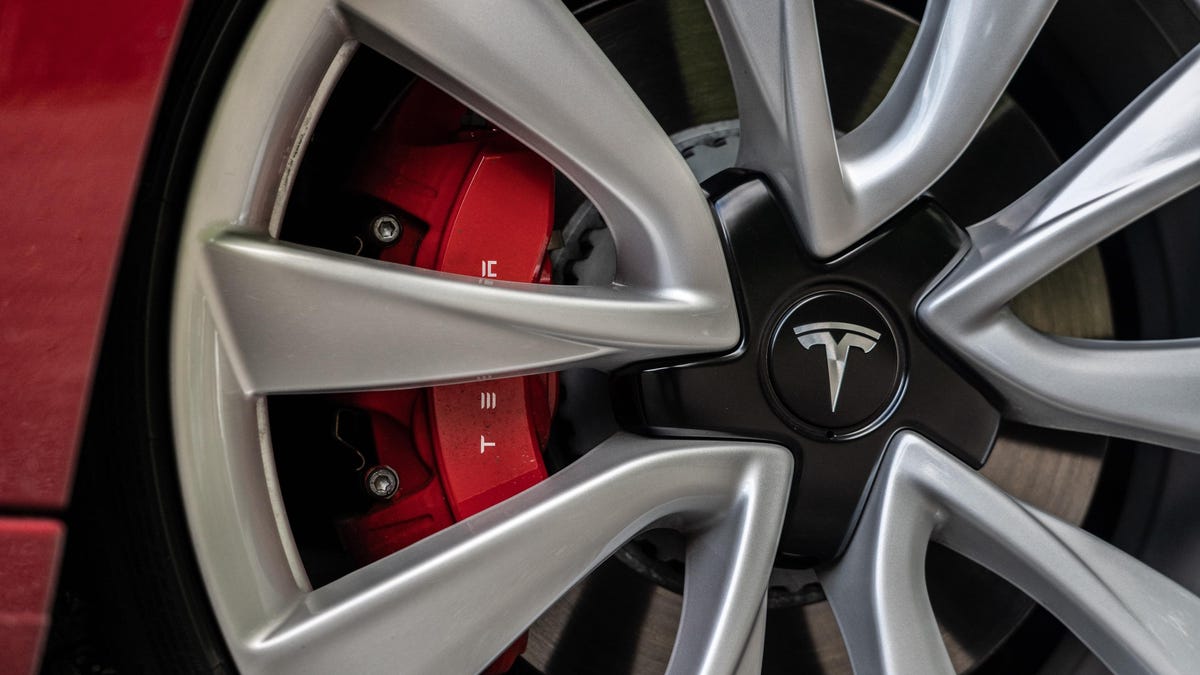Tesla turns a profit in Q3 thanks to Model 3 production boost
Elon Musk redeems himself with better-than-expected earnings, telling investors the electric car company did what many argued was "impossible."

Tesla has released its third-quarter financials for 2018. CEO Elon Musk said previously that he hoped for Tesla to be profitable in either Q3 or Q4, and as it turns out, the company didn't even have to wait until Q4.
Tesla on Wednesday reported another record revenue of $6.8 billion, equivalent to a profit of $300 million, or $2.90 per share. This is in contrast to Q2, when the automaker posted then-record automotive revenues of $3.4 billion (closer to $4 billion with energy offerings lumped in), which still resulted in an adjusted loss of $3.06 per share, worse than analysts had estimated.
Tesla has only been in the black twice in its history as a public company, and this marks No. 3.
There's a chance, though, that Tesla's profit might be short-lived. While Musk has stressed that Tesla has no need to raise additional cash at the moment, the automaker has roughly $2.2 billion in debt that's coming due by November 2019. Payments to eliminate that debt might offset future quarterly profits, even if Tesla continues to ramp up Model 3 production and improve its margins.
Speaking of which, the Model 3's gross margin turned positive in Q2, and things are looking even better in Q3, with Tesla reporting both GAAP and non-GAAP margins in excess of 20 percent. Having a high margin is important -- it means Tesla makes more money with each car sold. As lower-cost models like the midrange Model 3 and the upcoming short-range Model 3 come online, Tesla will need to balance that with its higher-cost (and higher-margin) Model 3 variants, like the Performance model.
The Model 3 has been hugely important to Tesla thus far. In Q3, Tesla reported that it delivered 55,840 Model 3s, more than triple the number of Model S or Model X deliveries. In fact, more Model 3s were delivered this quarter than in all previous quarters combined -- and doubled. However, those deliveries were restricted to high-cost variants, cash or loan transactions and North American customers. Opening up lower-cost models, lease offers and international sales will certainly open up more avenues for profitability, provided the logistics for efficient deliveries are in place.
As for Q4, Tesla has high expectations. The company expects increased Model 3 production and delivery numbers in Q4, in addition to delivering over 100,000 Model S and Model X vehicles by year's end. It also expects Model 3 margins to stay around where they currently are, despite eating tariff costs on components sourced from China. Overall, the company expects to suffer a $50 million hit to its profitability from the Chinese tariffs alone. As for cash on hand, Tesla believes it's in a good spot: "Our cash position should remain at least flat in spite of our plan to repay $230 million of convertible notes in cash during Q4," Tesla wrote in its quarterly shareholder report.
Tesla moved its third-quarter reporting up by a week or two, and some in the financial sector believed that move was Tesla signaling that it had pulled a profit. And hey, what you do you know, that's exactly what happened. It may not have much effect on the layperson but Tesla's profit sends clear signals to the financial industry that, despite its missteps, it's playing the best ball it can.
It's been a busy quarter for Tesla, even without the whole "building cars" thing. Musk has been both a strong asset and a strong liability for the company, although most of his activities of late could be categorized as the latter. Earlier this year, he tweeted that he had secured the funding to take Tesla private, but eventually decided to keep the company public. That first tweet caught the attention of the SEC, which eventually sued the CEO and requested his ouster from Tesla. The two parties settled, with both Tesla and Musk paying $20 million each, in addition to Musk agreeing to abdicate his position as chairman of the board, though he will remain as CEO.
Tesla Model 3 Performance: The future, quicker.
Tesla Model X: Falcon doors are hardly the most interesting thing about this electric SUV.

